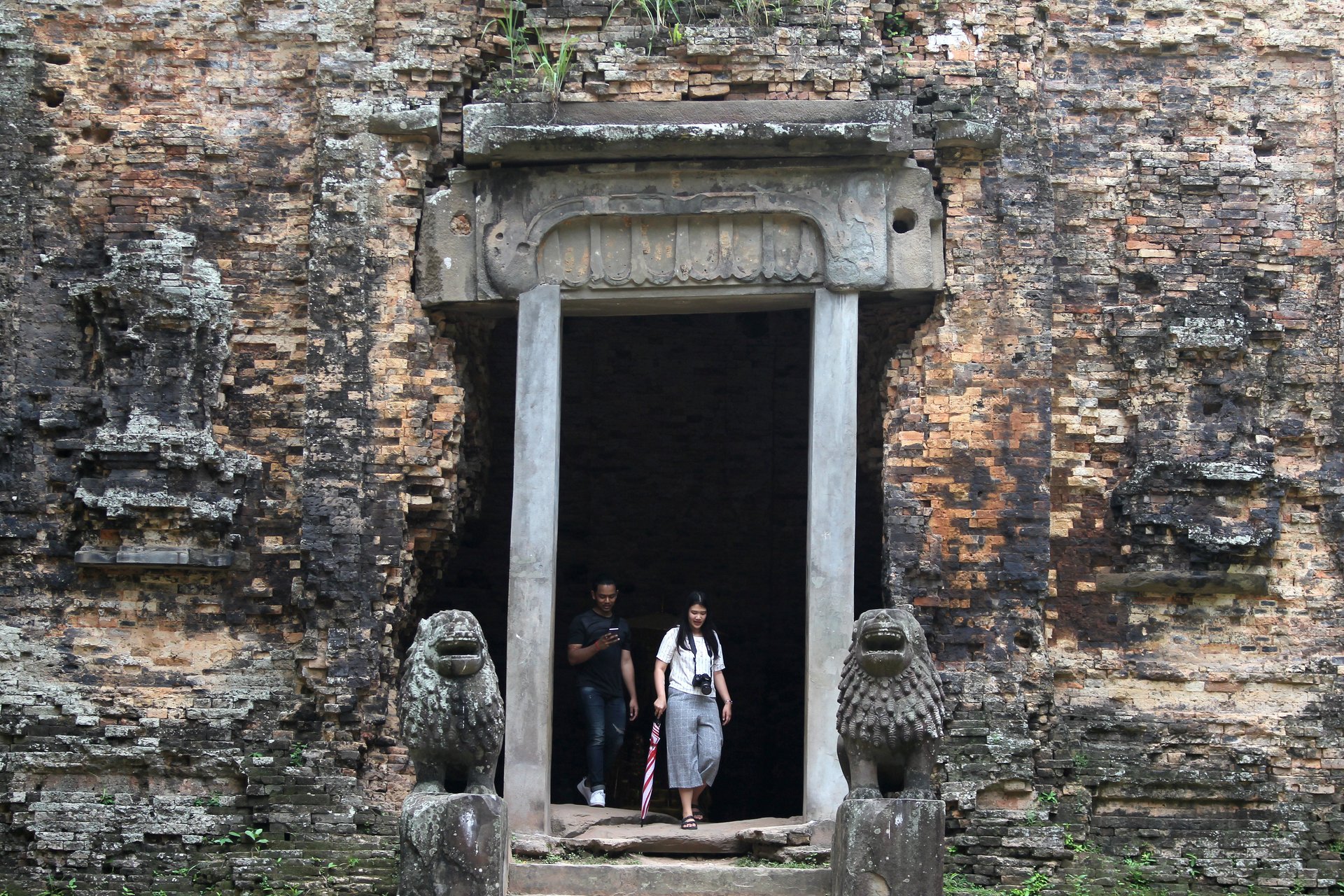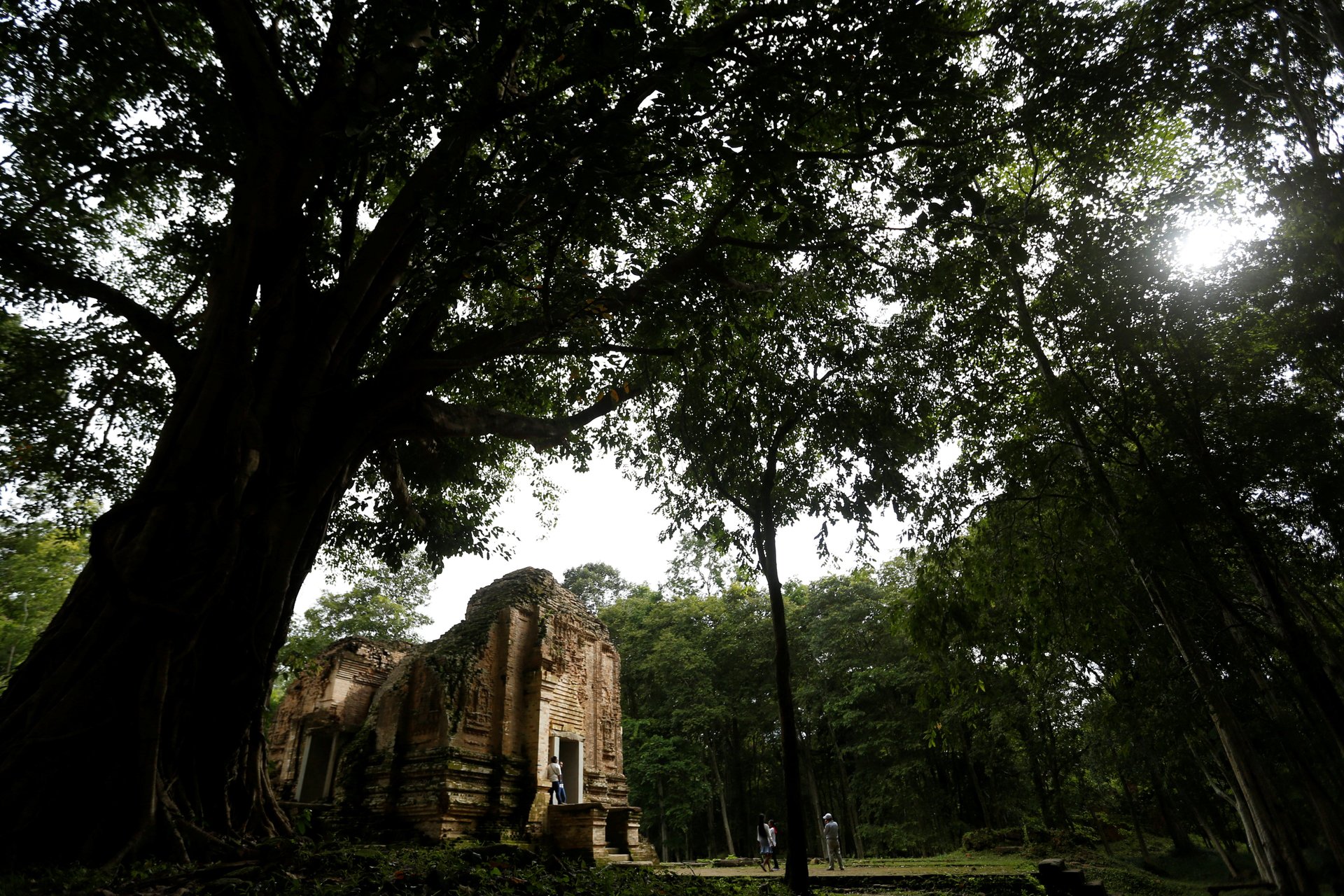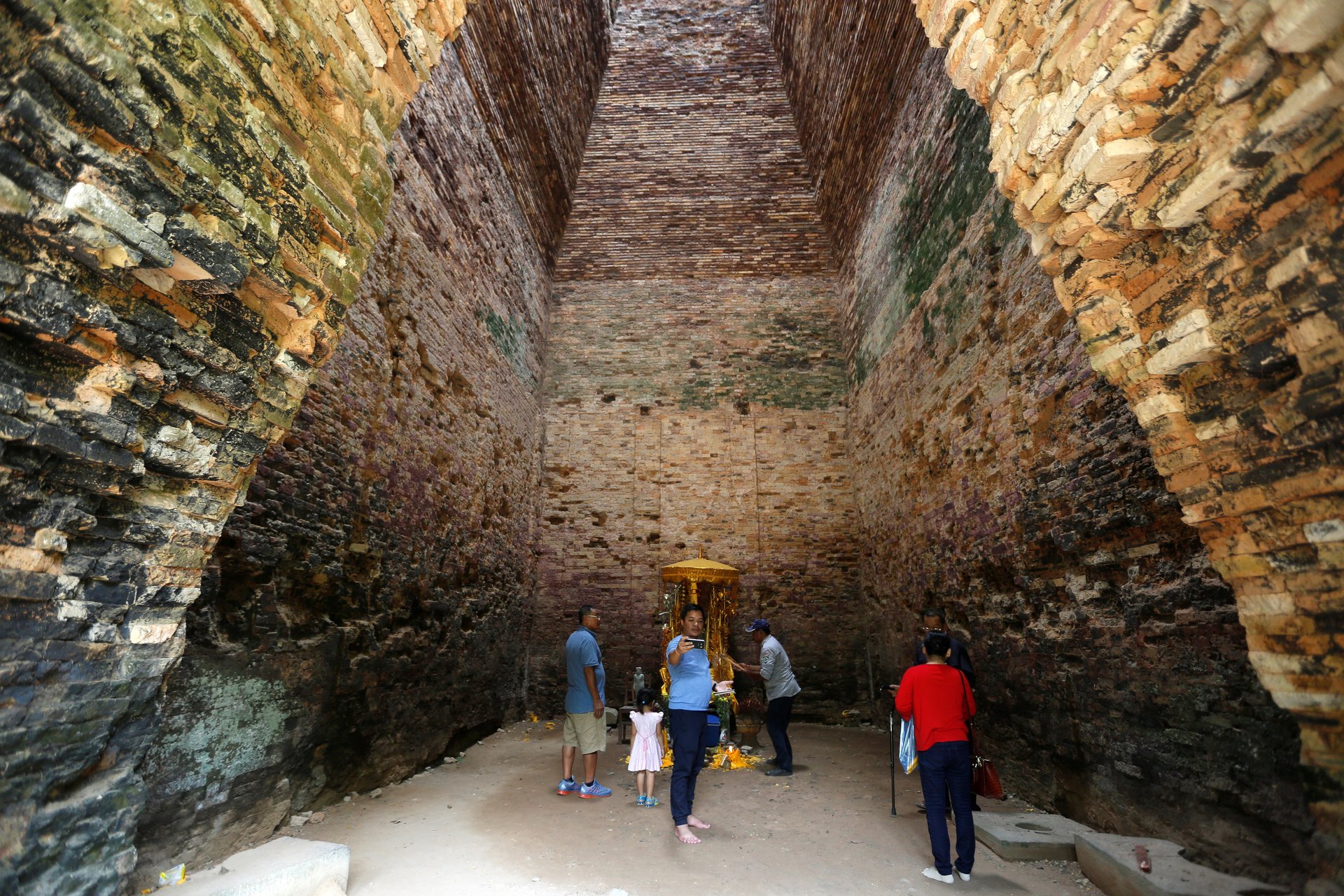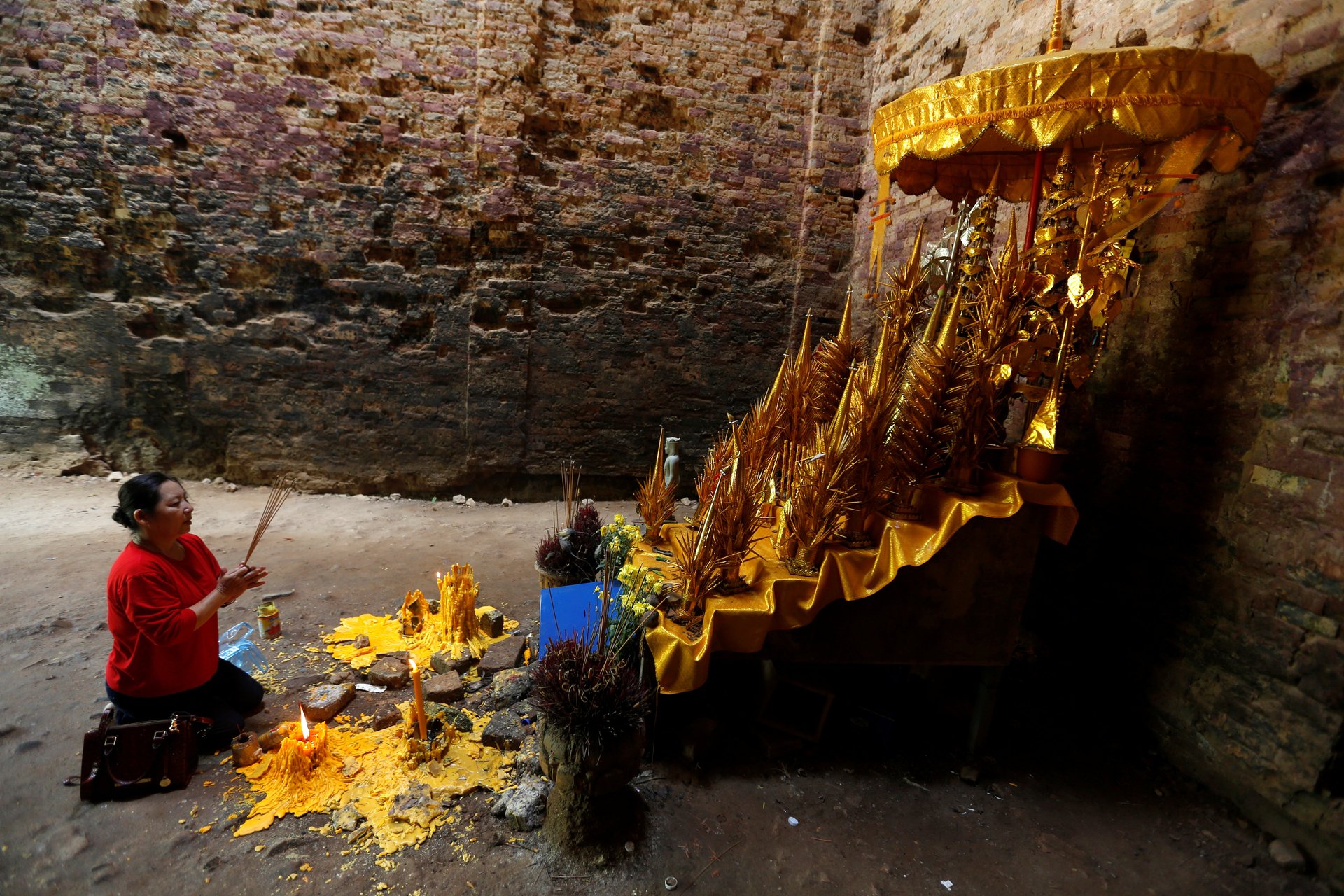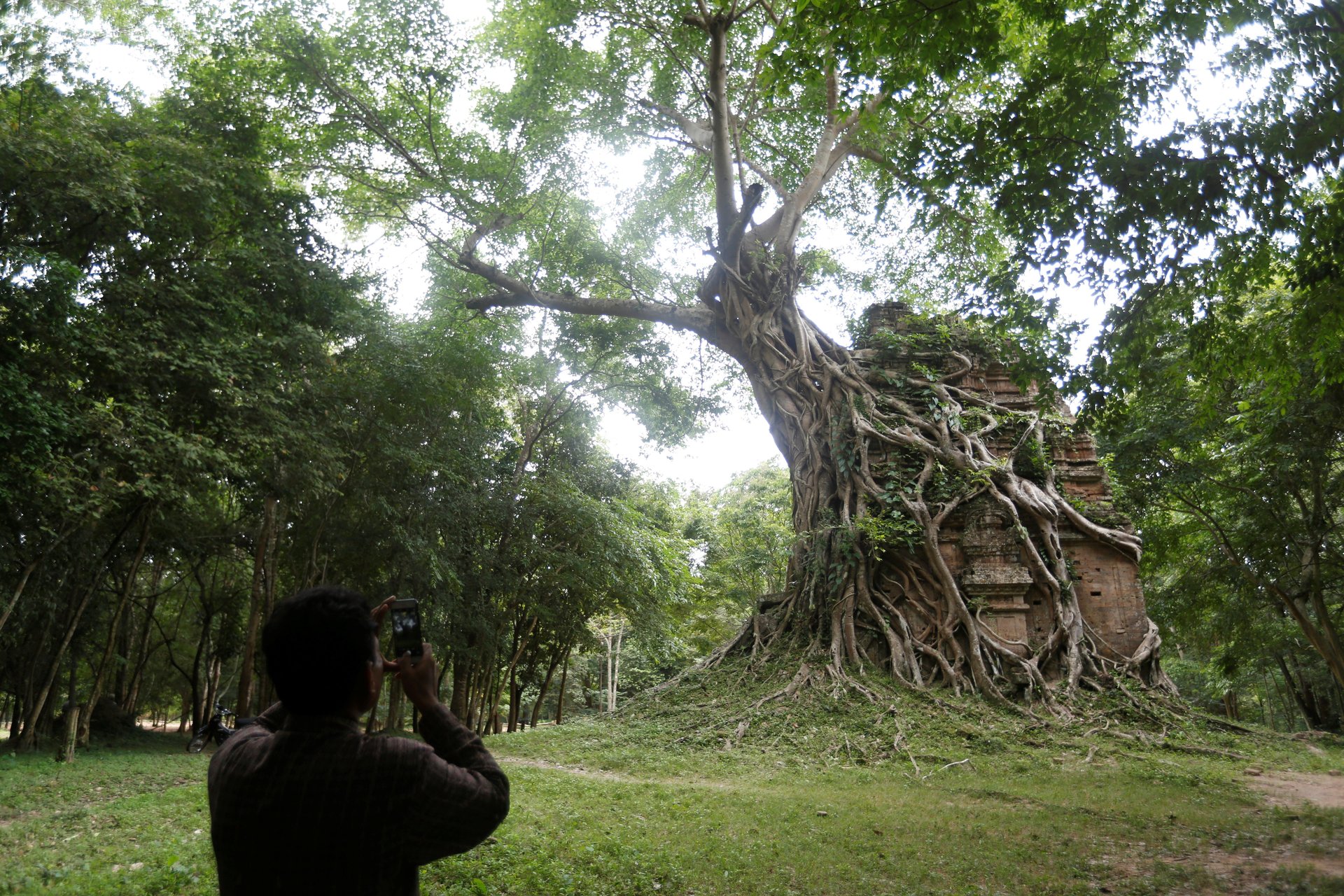At one of the world’s newest UNESCO sites, an ancient forest city that once ruled an empire
Earlier this month, Cambodia was awarded its third UNESCO designation. The Sambor Prei Kuk temple zone, sitting between Siem Reap and the capitol Phnom Penh, is an archeological site dating back to the 6th century AD. It joins Cambodia’s other two UNESCO sites, the Temple of Preah Vihear and the iconic Angkor Archaeological Park.
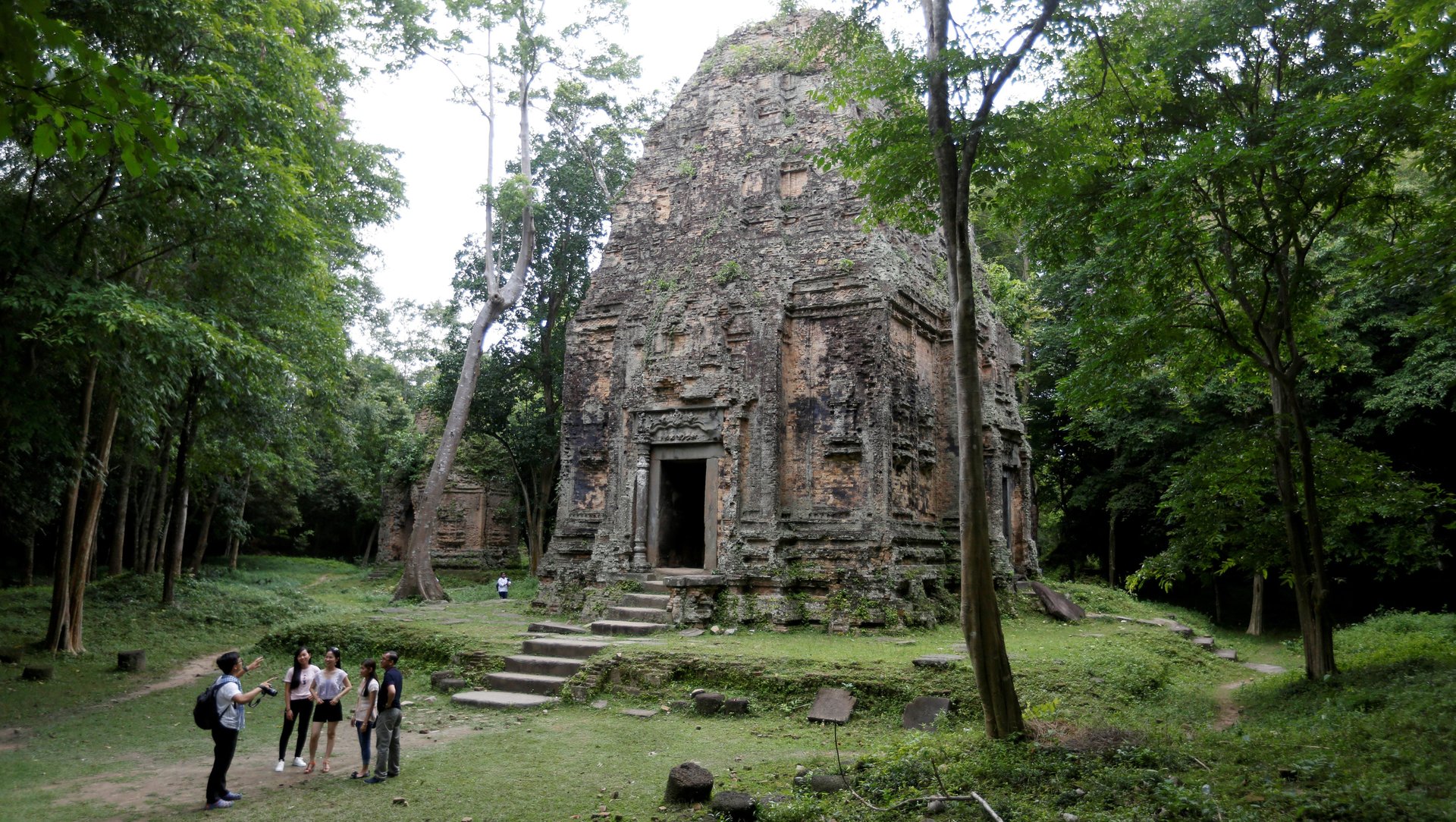

Earlier this month, Cambodia was awarded its third UNESCO designation. The Sambor Prei Kuk temple zone, sitting between Siem Reap and the capitol Phnom Penh, is an archeological site dating back to the 6th century AD. It joins Cambodia’s other two UNESCO sites, the Temple of Preah Vihear and the iconic Angkor Archaeological Park.
The site, which translates to “temple in the richness of the forest,” is a cluster of temples and an ancient city center believed to be the ruins of Ishanapura, the capital of the Chenla empire. The Chenla were a short-lived civilization whose downfall led to the founding of the more dominant Khmer Empire centuries later.
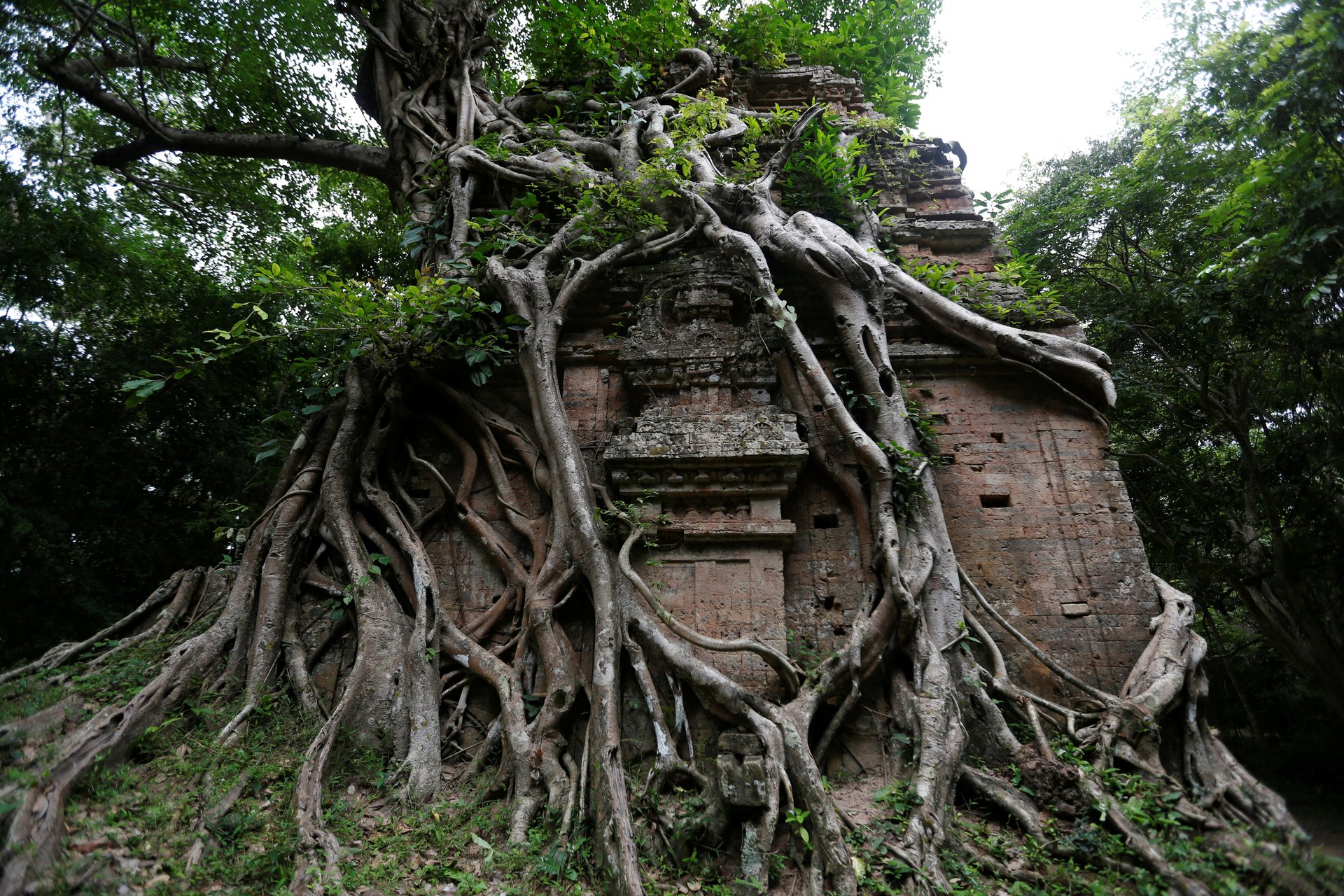
While considerably smaller than the Angkor temple complex, at only 25 square kilometers compared to Angkor’s 400, it is centuries older than one of southeast Asia’s most well-known tourist sites. Its artwork, UNESCO claims, “lay the ground for the unique Khmer style of the Angkor period.”
Tourism is one of Cambodia’s largest industries, with more than five million people visiting the country in 2016, up 5% from the previous year, according to Reuters. Over two million of those visitors go to Angkor Wat.
Cambodian prime minister Hun Sen predicted that 7 million foreign tourists will visit Cambodia in 2020, and tourism will account for 800,000 jobs, not an insignificant number for a small country of around 16 million. Now all those tourists will have a new stop to add to their itineraries.
